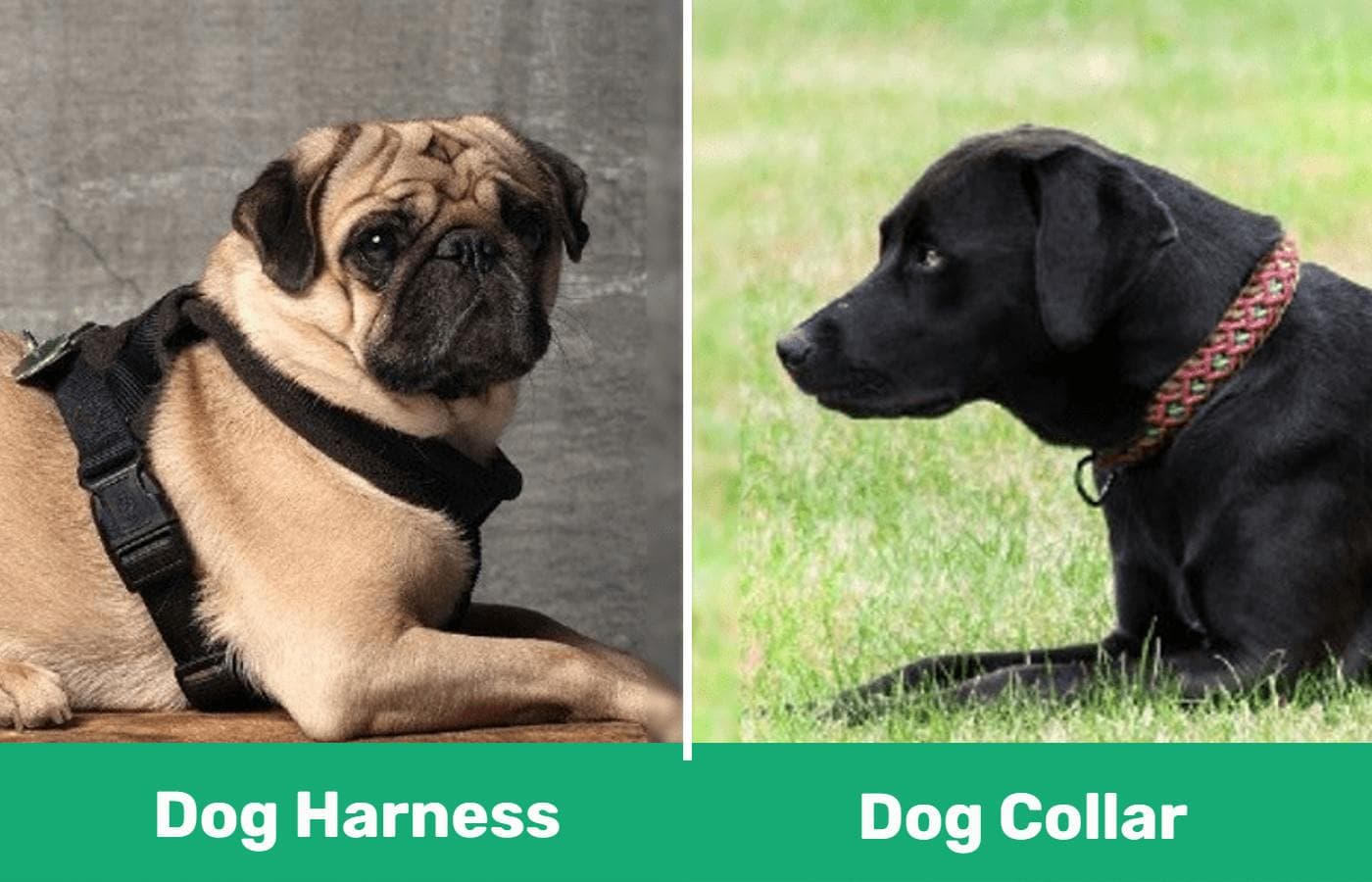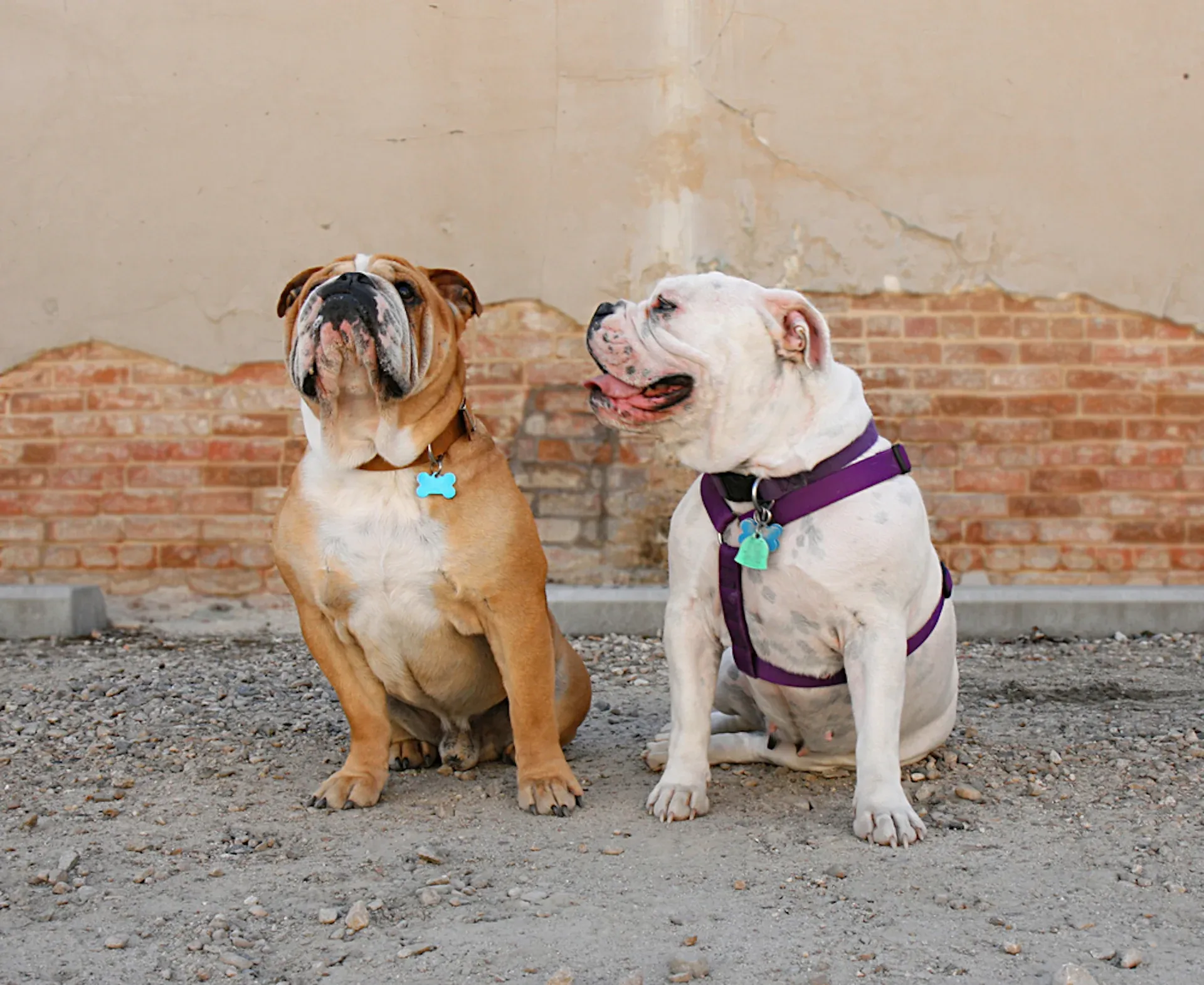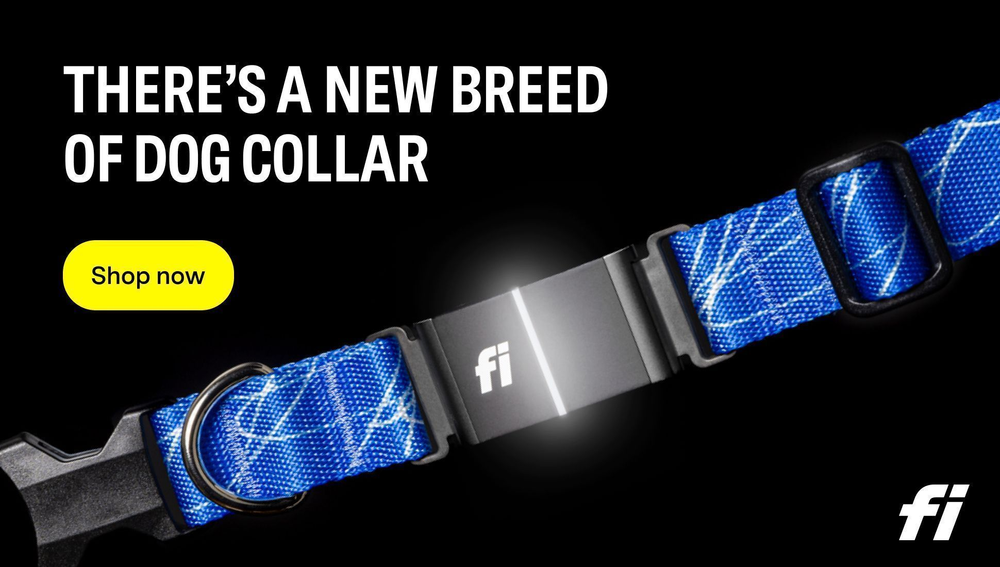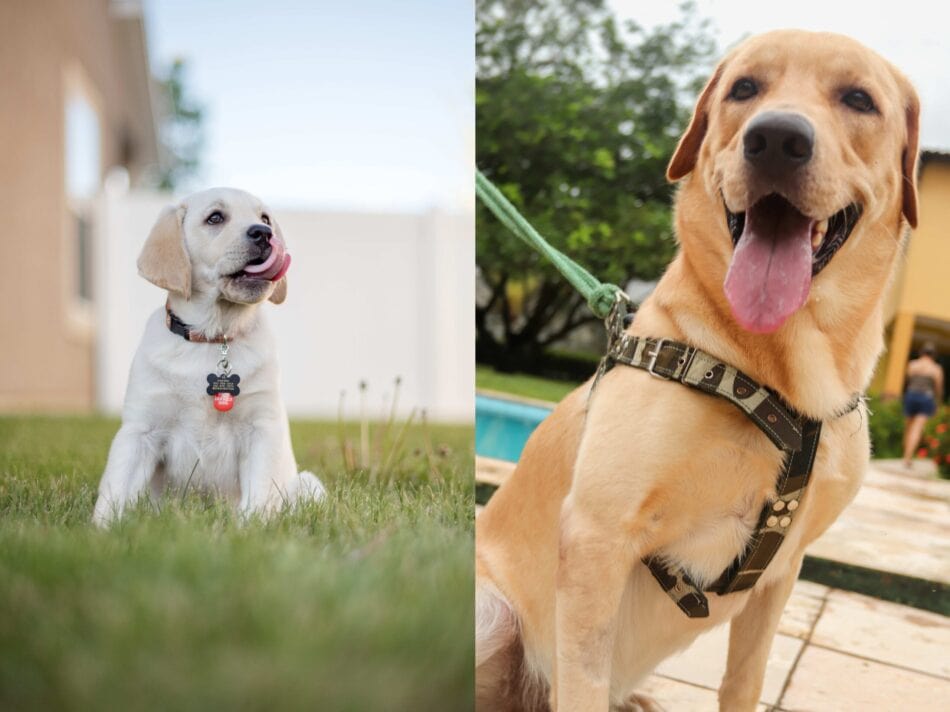A common debate among pet owners is whether to use a harness or a collar when walking their dogs. Both options have their advantages and disadvantages, and it ultimately comes down to personal preference and the needs of the dog. In this article, we will explore the differences between a harness and a collar, and help you determine which option is best for your furry friend.

Collars are the more traditional option and are commonly used for everyday walks. They come in a variety of materials, such as nylon, leather, and chain, and can be adjusted to fit the size of the dog's neck. Collars are also available in different styles, such as flat collars, martingale collars, and choke chains. While collars are easy to put on and take off, they can put pressure on the dog's neck and throat, which can be dangerous for dogs with respiratory issues or small breeds. Additionally, collars can be a choking hazard if the dog pulls too hard or gets caught on something.
Defining the Basics
What Is a Dog Harness?
A dog harness is a piece of equipment that is designed to fit around a dog's body and attach to a leash. It is used as an alternative to a collar and is often preferred by dog owners who want to reduce the risk of neck injuries or choking. Dog harnesses come in a variety of styles and types, including back-clip, front-clip, and dual-clip harnesses.
Back-clip harnesses are the most common type of dog harness and are designed to attach to a leash at the back of the dog's body. This style of harness is easy to use and allows for greater control over the dog's movements. Front-clip harnesses, on the other hand, are designed to attach to a leash at the front of the dog's body. This type of harness is often used for dogs that pull on the leash, as it helps to redirect their attention and discourage pulling. Dual-clip harnesses offer the best of both worlds, as they allow for attachment at both the front and back of the harness.

What Is a Dog Collar?
A dog collar is a piece of equipment that is designed to fit around a dog's neck and attach to a leash. It is a traditional and commonly used piece of equipment for walking and training dogs. Dog collars come in a variety of styles and types, including flat collars, martingale collars, choke chains, and prong collars.
Flat collars are the most common type of dog collar and are designed to fit comfortably around the dog's neck. They are often used for everyday walking and identification purposes. Martingale collars are designed to tighten slightly when the dog pulls, providing greater control without the risk of choking. Choke chains and prong collars are controversial types of collars that are designed to provide greater control over the dog's movements but can cause pain and injury if used improperly.
In summary, dog harnesses and collars are both pieces of equipment that are designed to attach to a leash and provide control over a dog's movements. Dog harnesses are an alternative to collars and are often preferred by dog owners who want to reduce the risk of neck injuries or choking. Dog collars come in a variety of styles and types, including flat collars, martingale collars, choke chains, and prong collars. It is important to choose the right type of equipment for your dog's needs and to use it properly to ensure their safety and well-being.
Harness vs. Collar: Core Differences
When it comes to walking your dog, choosing between a harness and a collar can be a difficult decision. Both have their advantages and disadvantages, and the choice ultimately depends on the individual needs of your dog. In this section, we will explore the core differences between harnesses and collars, including their design and functionality, pressure points, and safety.
Design and Functionality
A collar is a simple loop of material that fits around a dog's neck and is fastened with a buckle or clip. It is designed to allow the dog to move freely and to provide a means of attaching a leash for control. A harness, on the other hand, is a more complex piece of equipment that fits around the dog's chest and shoulders, with straps that wrap around the body and clip together. The leash is attached to a ring on the back of the harness.
Harnesses are generally considered to be more secure and provide more control over the dog's movement. They distribute pressure evenly across the chest and shoulders, rather than putting all the pressure on the neck as a collar does. This can be beneficial for dogs with health issues, such as those with respiratory problems or tracheal collapse, as it reduces pressure on the neck and allows for easier breathing.
Pressure Points and Safety
Collars can put pressure on the dog's neck, which can be uncomfortable or even harmful if not fitted properly. If the collar is too tight, it can cause breathing difficulties or even damage the dog's windpipe. If the collar is too loose, the dog may be able to slip out of it and run away.
Harnesses, on the other hand, distribute pressure more evenly across the dog's body, reducing the risk of injury or discomfort. They are also less likely to come off accidentally, providing greater security and control over the dog's movement.
In terms of safety, both harnesses and collars can be used effectively, but it is important to choose the right one for your dog's individual needs. For example, a collar may be more appropriate for a well-behaved dog that walks calmly on a leash, while a harness may be necessary for a more energetic or excitable dog that pulls on the leash.
Overall, the choice between a harness and a collar depends on a variety of factors, including the size and breed of your dog, their level of energy and activity, and any health issues they may have. By considering these factors and choosing the right equipment for your dog, you can ensure a safe and comfortable walking experience for both you and your furry friend.
Considerations for Choosing

When it comes to choosing between a harness and a collar for your dog, there are a few important factors to consider. The right choice will depend on your dog's breed, size, age, training stage, and behavioral characteristics. Here are some things to keep in mind:
Dog Breed and Size
The breed and size of your dog can play a significant role in determining whether a harness or collar is the better choice. For example, brachycephalic breeds like Bulldogs and Pugs may be more comfortable in a harness that doesn't put pressure on their necks and airways. Similarly, small dogs may benefit from a harness that distributes pressure more evenly across their bodies, while larger dogs may require a collar for better control.
Age and Training Stage
The age and training stage of your dog can also impact your choice of harness or collar. Puppies, for example, may benefit from a harness that provides more support and control as they learn to walk on a leash. Older dogs may require a collar for better control and to avoid exacerbating any neck or back issues. Dogs in training may also need a specific type of harness or collar depending on their training goals.
Behavioral Characteristics
Finally, your dog's behavioral characteristics can also influence your choice of harness or collar. Dogs that pull on the leash may require a harness that discourages pulling, while dogs that are prone to escaping may need a collar that provides more security. Similarly, dogs with sensitive skin or allergies may require a specific type of harness or collar that won't irritate their skin.
In summary, when choosing between a harness and a collar, it's important to consider your dog's breed, size, age, training stage, and behavioral characteristics. By taking these factors into account, you can make an informed decision that will help keep your dog comfortable and safe while on walks.
Specific Use Cases
Walking and Exercise
When it comes to taking your dog for a walk or run, both harnesses and collars can be used effectively. However, it is important to consider your dog's size, breed, and behavior when deciding which one to use. A harness can be a good option for dogs that tend to pull on their leash, as it distributes the pressure evenly across their body and reduces the risk of injury to their neck. On the other hand, a collar can be a good option for dogs that are well-behaved and do not pull on their leash, as it allows for more freedom of movement.
Training and Behavior Modification
Both harnesses and collars can be used as training tools to discourage undesirable behaviors such as pulling or jumping. A harness can be particularly useful for leash training, as it provides more control over your dog's movements and can help guide them in the right direction. Collars can also be used for training, but it is important to ensure that they are not too tight and do not cause any discomfort to your dog.
In summary, both harnesses and collars have their own specific use cases when it comes to walking, exercise, and training. It is important to consider your dog's individual needs and behavior when deciding which one to use. Using the right tool can make a big difference in your dog's comfort and overall behavior.
Health and Comfort Factors
When it comes to choosing between a harness and a collar for your pet, health and comfort are important factors to consider. Here are some aspects to keep in mind:
Preventing Injuries and Health Risks
Collars can put pressure on a dog's neck, potentially leading to tracheal collapse or respiratory problems. If your dog pulls on the leash, this can exacerbate the issue. Additionally, collars can cause back pain if your dog pulls too hard. On the other hand, a well-fitted harness distributes pressure more evenly across the chest and shoulders, reducing the risk of injury.
Harnesses can also be beneficial for dogs with certain health conditions. For example, if your dog has a history of back pain or spinal issues, a harness can help support their body and prevent further discomfort.
Enhancing Comfort for Daily Use
Comfort is key when it comes to choosing a harness or collar for your pet. Collars can cause discomfort, pain, sores, hot spots, and even rashes if they are too tight or worn for extended periods of time. Harnesses, on the other hand, are designed to be more comfortable for daily use. They don't put pressure on the neck and can be adjusted to fit your dog's body more snugly.
Overall, while collars may be a traditional choice, harnesses offer a more enjoyable and comfortable experience for your pet. When selecting a harness, make sure to choose one that is well-fitted and appropriate for your dog's size and breed. By prioritizing your pet's health and comfort, you can ensure that they are happy and healthy on their daily walks.
Types and Varieties
When it comes to choosing between a collar and a harness for your dog, it's important to understand the different types and varieties available. This section will explore the various collar and harness options to help you make an informed decision.
Exploring Collar Types
Collars come in a variety of styles, each with its own unique features and benefits. Here are some of the most common types of collars:

- Flat Collar: The most basic type of collar, typically made of nylon or leather. It's adjustable and comes in a variety of colors and designs. It's suitable for most dogs and can be used for everyday wear.
- Martingale Collar: Also known as a limited-slip collar, this type of collar is designed for dogs with narrow heads, such as Greyhounds. It tightens slightly when the dog pulls, preventing them from slipping out of the collar.
- Choke Collar: This type of collar is designed to tighten around the dog's neck when they pull, causing discomfort and discouraging pulling behavior. However, it can be harmful if used incorrectly and is not recommended for inexperienced dog owners.
- Prong Collar: Also known as a pinch collar, this type of collar has metal prongs that dig into the dog's neck when they pull. It's controversial and not recommended by many trainers due to the potential for injury and pain.
- Rolled Collar: This type of collar is designed to reduce matting and tangling of long-haired breeds. It's made of soft leather and rolls around the dog's neck, preventing hair from getting caught in the collar.
Diversity in Harness Styles
Harnesses are a popular alternative to collars, especially for dogs that pull or have respiratory issues. Here are some of the most common types of harnesses:
- Front-Clip Harness: This type of harness has a leash attachment on the front of the dog's chest, which helps discourage pulling behavior. It's suitable for most dogs and is a good option for training.
- Back-Clip Harness: This type of harness has a leash attachment on the back of the dog's shoulders, which is suitable for dogs that don't pull. It's comfortable and easy to put on, but may not be effective for training.
- Head Collar: Also known as a halter, this type of harness goes over the dog's nose and behind their ears, giving the owner more control over the dog's head and neck. It's effective for dogs that pull or lunge, but may take some time for the dog to get used to.
In conclusion, understanding the different types and varieties of collars and harnesses is important when choosing the right option for your dog. Consider your dog's breed, size, and behavior when making your decision, and always choose a high-quality product that fits properly and is comfortable for your dog to wear.
Practical Tips and Maintenance
Correct Fitting and Adjustment
When it comes to harnesses and collars, proper fitting is crucial for the comfort and safety of your pet. A poorly fitting harness or collar can cause discomfort, chafing, and even injury. It's important to measure your pet's neck and chest to ensure you choose the correct size. If you're unsure, consult with a vet or veterinarian to get their expert opinion.
When fitting a harness, make sure it's snug but not too tight. You should be able to fit two fingers between the harness and your pet's skin. Adjust the straps to ensure a proper fit. For a collar, you should be able to fit two fingers between the collar and your pet's neck. It's important to check the fit of your pet's harness or collar regularly, especially as they grow or gain/lose weight.
Cleaning and Care
To keep your pet's harness or collar in good condition, regular cleaning and care are necessary. For leather collars, use a leather cleaner and conditioner to keep the leather supple and prevent cracking. For nylon harnesses, use a mild detergent and warm water to clean. Be sure to rinse thoroughly and air dry.
It's also important to inspect your pet's harness or collar regularly for signs of wear and tear. Replace any damaged or worn out harnesses or collars immediately to ensure the security and safety of your pet.
In conclusion, taking proper care of your pet's harness or collar is important for their comfort and safety. By ensuring correct fitting and adjustment, and regular cleaning and care, you can help your pet stay happy and healthy.
Identification and Legal Considerations
ID Tags and Microchips
One of the most important aspects of owning a dog is ensuring that they can be identified if they are lost or stolen. Two common methods of identification are ID tags and microchips.
ID tags are small tags that attach to a dog's collar and contain information such as the dog's name, owner's name, and phone number. These tags are a quick and easy way for someone who finds a lost dog to get in touch with the owner.
Microchips are small electronic devices that are implanted under a dog's skin. Each microchip has a unique identification number that is registered with a database that can be accessed by animal shelters and veterinarians. If a lost dog is found and brought to a shelter or vet, they can scan the microchip and contact the owner.
It is recommended that dogs have both ID tags and microchips for maximum identification. It's important to keep the contact information on the ID tag and microchip up to date so that if the dog is lost, the owner can be contacted quickly.
Legal Requirements for Dog Identification
In many states and municipalities, there are legal requirements for dogs to have identification. This can include wearing a rabies tag, which indicates that the dog has been vaccinated against rabies, and having a pet ID tag with the owner's contact information.
Some areas also require dogs to be microchipped. It's important for dog owners to research the specific laws and regulations in their area to ensure that they are in compliance.
In addition to legal requirements, having proper identification for a dog can also help protect the owner in the event of a legal dispute. If a dog bites someone or causes property damage, having identification can help prove ownership and responsibility.
Overall, it's important for dog owners to prioritize proper identification for their pets. This not only helps ensure that lost dogs can be reunited with their owners, but also helps comply with legal requirements and protect the owner in case of a dispute.
Frequently Asked Questions

- Q1: What are the benefits of using a harness for dogs that pull?
- A harness can help distribute the pressure of pulling across a dog's body, rather than just on their neck. This can be especially helpful for dogs with respiratory issues or those prone to neck injuries. Additionally, harnesses can provide better control and prevent dogs from slipping out of their collar.
- Q2: How do harnesses impact a dog's shoulders compared to collars?
- When properly fitted, harnesses can help prevent strain on a dog's shoulders and neck. This is because the pressure from pulling is distributed across the chest and back rather than concentrated on the neck. In contrast, collars can put pressure on the neck and cause discomfort or injury.
- Q3: What type of restraint do veterinarians typically recommend for puppies: harness or collar?
- Most veterinarians recommend using a harness for puppies, especially those under six months old. This is because puppies are still developing and their necks are not yet strong enough to support the pressure of a collar. A harness can help prevent injury and provide better control during walks.
- Q4: Are there any downsides to using a harness on a dog?
- While harnesses can be beneficial, they may not be suitable for all dogs. Some dogs may find them uncomfortable or restrictive, and they may not provide enough control for dogs that are strong pullers. Additionally, some harnesses can be difficult to put on and take off, which can be frustrating for both the dog and owner.
- Q5: Is a harness or collar more suitable for small dog breeds?
- Small dogs may benefit from using a harness, as collars can put pressure on their delicate necks and trachea. However, it is important to choose a harness that is properly fitted and does not restrict their movement. Some small dogs may also do well with a collar, especially if they are not prone to pulling.
- Q6: Should you consider both a harness and a collar for your dog's daily activities?
- Using both a harness and a collar can provide added control and safety during walks or other activities. For example, a collar can be used for identification purposes, while a harness can be used for control and comfort. However, it is important to ensure that both the harness and collar are properly fitted and do not cause discomfort or injury to the dog.




